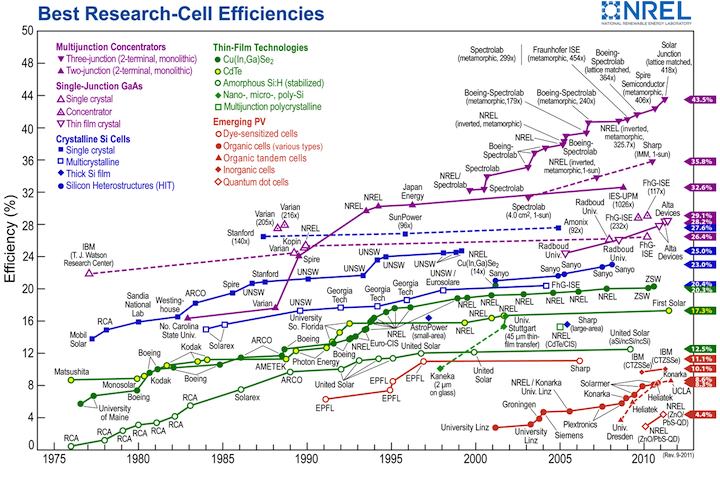Photovoltaic Solar Panels - How They Work
Form a mental image of "solar power": I'm willing to bet that the first thing that pops into your mind is an image of a photovoltaic, or solar, panel. I can safely make that assumption since photovoltaic panels have been the face of solar power for decades.
Dramatic improvements in photovoltaic technology in terms of design and efficiency are making solar power a realistic option for those who wish to make their home as green as possible.
Reduction of polluting, nonrenewable sources of energy such as coal and oil is a mandatory requirement of any green home.
The integration of renewable energy such as solar into the design and construction of a home can go a long way towards drastically reducing, even eliminating, the use of fossil fuels.
For many, it may not be very important to know exactly how a solar panel converts sunlight into usable electricity. After all, we all drive automobiles, use microwave ovens, cell phones, etc. everyday, but how many of us can explain in detail exactly how they work? As long as our technology works, most of us are happy.
For those who like to know a little bit about how solar panels work, we offer a very brief overview. It's all about the electrons.

NREL National Renewable Energy Labs - Solar Cell Efficiency Chart
Photovoltaic Solar Panels: A Non-Scientific Description
Explaining the science behind how photovoltaic panels turn sunlight into electrical energy for your home can fill volumes. To put it very simply, they do it by using magic. Well, not quite magic, but pretty close.
A solar panel is the familiar-looking assembly of interconnected solar cells, which are also known as photovoltaic cells. Because today's solar panels are only capable of producing a relatively small amount of electricity, they are often used in groups of several panels to boost the system's overall capacity to produce power.
Silicon Is The Secret
Photovoltaic solar panels are made with two sheets or layers of a treated semiconductor material, usually silicon. Silicon is expensive to mine, refine, and manufacture into solar panels, but today it is the most efficient material for solar cells, topping out at about 20 percent efficiency. Silicon isn't perfect, but it's an abundant element in nature and the best material we've got as scientists work to develop new technologies and materials for the solar panels of tomorrow.
Inside the solar panel, the two layers of silicon are treated, or "doped", with certain elements. Typically one side is doped with arsenic, the other with boron.
The Flow Of Electrons
Because of the way each element bonds to the silicon semiconductor material,the layer doped with boron, the N-layer, has a surplus of free electrons and has a negative charge. The other layer, the P-layer, has an electron deficit and a positive charge. Those deficits are called holes. The two layers are pressed very closely together, and the fun begins.
Get Your Electrons Excited
When enough tiny particles of energy from the sun called photons are absorbed into the panel's N-layer, which is the top layer in the panel, some of those free electrons get excited, just like a teenage girl sunbathing on the beach. These excited electrons are freed from the negative semiconductor material, and naturally jump over the boundary between the layers to the P-layer, creating a voltage differential, very similar to a household battery.
Go With The Flow
When the layers of the solar panel are linked by a wire to an external load, the electrons flow through the circuit creating electricity which is used to store power in a battery or provide direct power to the home. After flowing through the load, the current goes back into the N-layer, which is now lacking some electrons. From here, the process repeats continually, as long as the sun is shining.
Like We Said, Magic.
As mentioned earlier, today's solar panels are relatively inefficient. To create enough power to supply some or all of a home's power, solar panels are wired together in parallel. How many panels depends on the available size of a homes roof, and the desired power output required by the entire system.
Due to the abundance of natural silicon, and the unlimited energy of the sun, solar power is an environmentally friendly form of power, and a visible sign of your commitment to renewable energy and sustainability.
comments powered by Disqus

























































































































































































